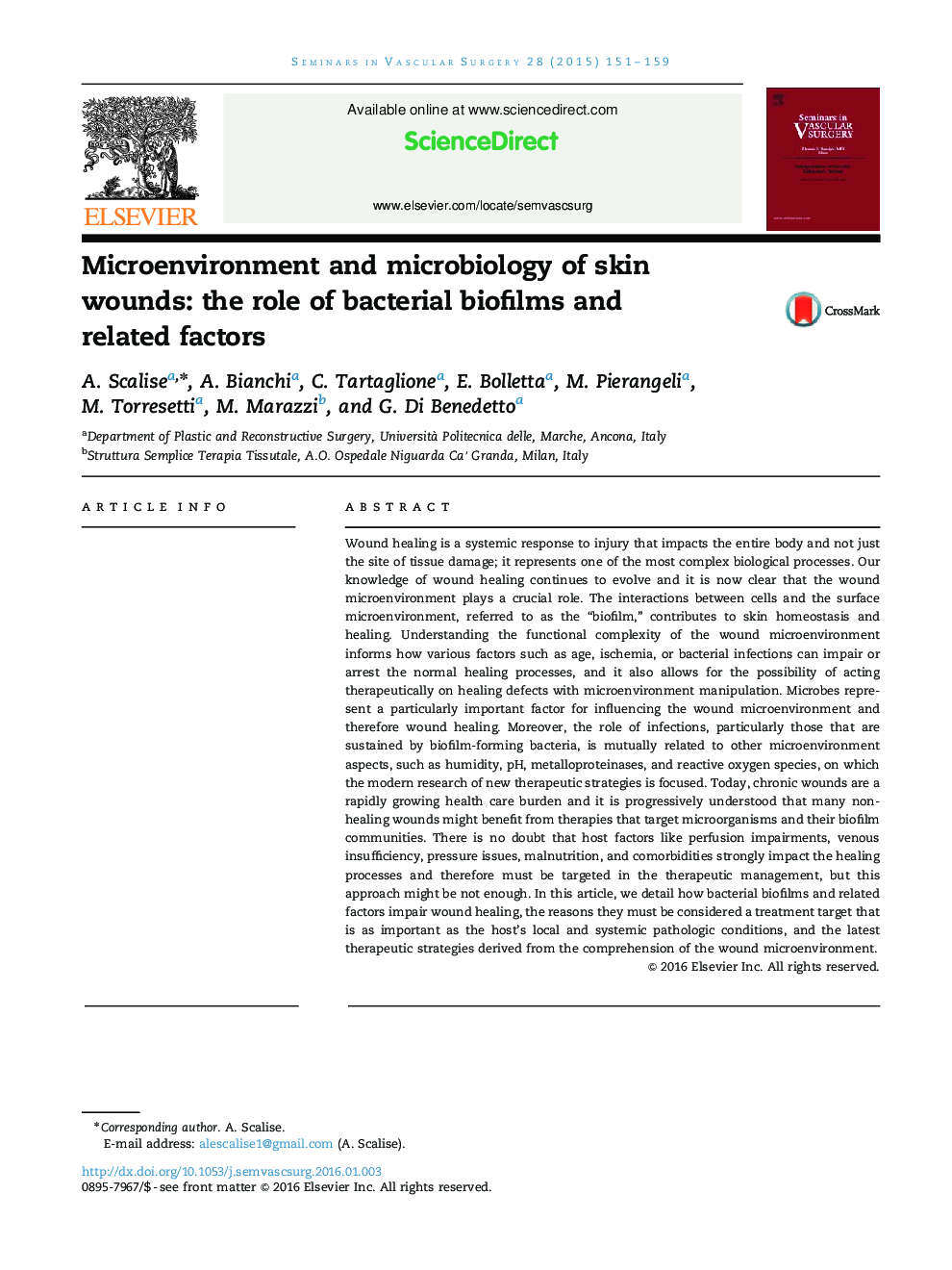| Article ID | Journal | Published Year | Pages | File Type |
|---|---|---|---|---|
| 3026081 | Seminars in Vascular Surgery | 2015 | 9 Pages |
Wound healing is a systemic response to injury that impacts the entire body and not just the site of tissue damage; it represents one of the most complex biological processes. Our knowledge of wound healing continues to evolve and it is now clear that the wound microenvironment plays a crucial role. The interactions between cells and the surface microenvironment, referred to as the “biofilm,” contributes to skin homeostasis and healing. Understanding the functional complexity of the wound microenvironment informs how various factors such as age, ischemia, or bacterial infections can impair or arrest the normal healing processes, and it also allows for the possibility of acting therapeutically on healing defects with microenvironment manipulation. Microbes represent a particularly important factor for influencing the wound microenvironment and therefore wound healing. Moreover, the role of infections, particularly those that are sustained by biofilm-forming bacteria, is mutually related to other microenvironment aspects, such as humidity, pH, metalloproteinases, and reactive oxygen species, on which the modern research of new therapeutic strategies is focused. Today, chronic wounds are a rapidly growing health care burden and it is progressively understood that many non-healing wounds might benefit from therapies that target microorganisms and their biofilm communities. There is no doubt that host factors like perfusion impairments, venous insufficiency, pressure issues, malnutrition, and comorbidities strongly impact the healing processes and therefore must be targeted in the therapeutic management, but this approach might be not enough. In this article, we detail how bacterial biofilms and related factors impair wound healing, the reasons they must be considered a treatment target that is as important as the host’s local and systemic pathologic conditions, and the latest therapeutic strategies derived from the comprehension of the wound microenvironment.
